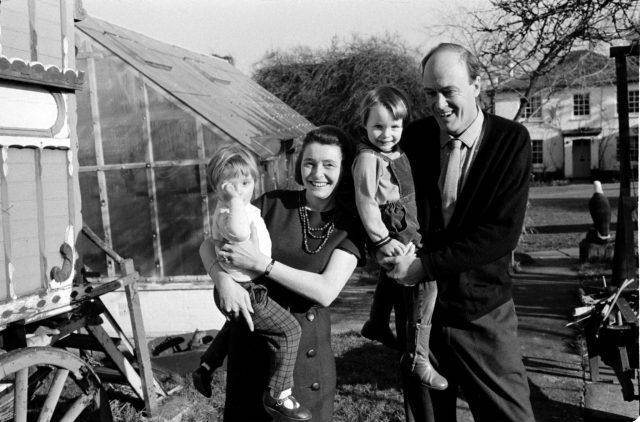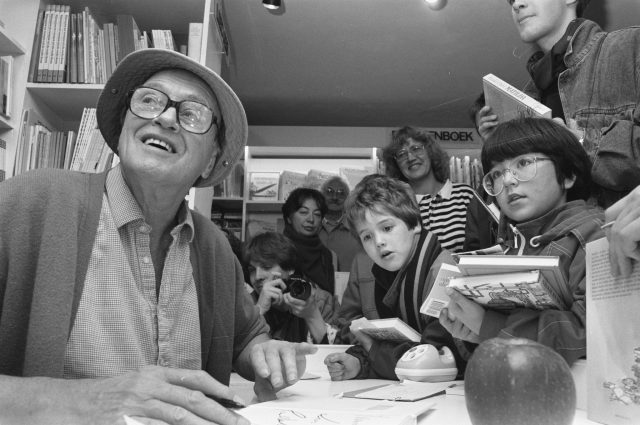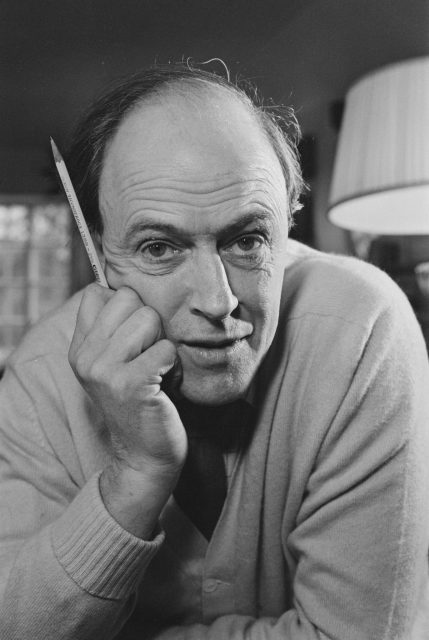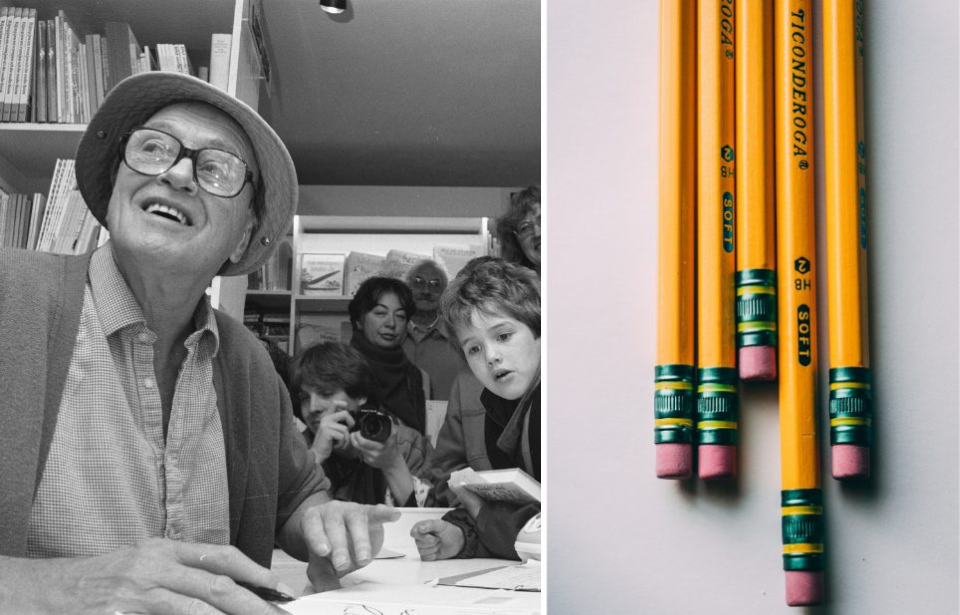Say the name “Roald Dahl” and nearly everyone can name a favorite book of his from their childhood. But while Dahl might have created heartwarming characters, the reality is that the man himself was far from endearing.
A conflicted character
While many remember him as a good man, a daring RAF pilot, and a spy, there are also those who remember him as an anti-Semitic bully who would offer out insults as readily as Willy Wonka handed out candy bars.

If you want to learn more about the great things Dahl was remembered for, you can check out other articles about him and his military service.
But for a more critical view, you might want to turn to the biography written in 1994 by Jeremy Treglown. While he recognizes that Dahl was “a war hero, a connoisseur, a philanthropist, and a devoted family man,” Treglown also details the author’s bullying and trouble-making nature.
Biography reveals cruel streak, rudeness, and prejudice
Treglown’s book alleges that Roald Dahl was cruel-to-be-kind after his first wife, Patricia Neal, suffered a stroke at just 39 years old. She’d been an actress before the stroke, and Dahl tried bullying, goading, and humiliating her into acting again. She came to refer to him as “Roald the Rotten.”

But other sources, such as a piece in the New Yorker in 2005, speak of how Dahl took over running the household while his wife was incapacitated, showing himself to be “pragmatic and resourceful.”
It adds that while his daughter, Tessa Dahl, has written that he was not physically affectionate to his children, this was counterbalanced by other kindnesses. For example: “Dahl once directed Tessa to look at the grass below her bedroom window. Fairies, he explained, had inscribed her name on the lawn. (He’d done it himself, by sprinkling weed killer).”
Controversy over his books
Opinions of Dahl’s books seem just as conflicted as opinions about the man himself. In 1972, children’s author Eleanor Cameron wrote in a journal how reading Dahl’s books was like eating candy: “delectable and soothing while we are undergoing the brief sensory pleasure it affords but leaves us poorly nourished with our taste dulled for better fare.”
Science-fiction author Ursula K. LeGuin seconded this opinion. She described how, when her daughter was reading Charlie and the Chocolate Factory, she was “like one possessed,” adding that “for a while after reading she was, for a usually amiable child, quite nasty.”

In the 1980s, Dahl’s book The Witches came under fire by feminists who claimed that the portrayal of the women in it was “misogynistic.” However, others defended Dahl by pointing out that the strongest character in the novel is the tough but loving grandmother, who is also a witch-hunter.
In Michelle Landsberg’s critical guide to children’s literature published in 1986, she said that Dahl’s misogyny was not limited to one book. She pointed out that “throughout his work, evil, domineering, smelly, fat, ugly women are his favorite villains.”
Editors toned him down
Anecdotal evidence suggests that keeping Dahl’s prejudices out of his books might have had a lot to do with his editors. This is a point that Treglown is keen to put across in his biography.
Matilda is by far one of Dahl’s most popular books. The quiet, unassuming, and neglected Matilda teaches herself to read. She is so smart that when the adults try to repress her, all her extra brain capacity comes out as telekinetic powers that she uses to bring about a better life for herself and her beloved teacher, Miss Honey.

But that wasn’t the plot for the first draft. Originally, Dahl had Matilda as a wicked child who starts off by torturing her parents before finding the time and impetus to become clever afterward. It was Stephen Roxburgh, Dahl’s editor, who decided that this wasn’t quite the right tone. Roxburgh helped overhaul the book and create a story that would enchant readers for generations.
Stephen Roxburgh also suggested removing a passage about nose-blowing in The Twits which was particularly graphic, and he also helped in turning Fantastic Mr. Fox from a shoplifter to “a noble avenger.” Sources indicate that Dahl responded to such edits with “mature flexibility, gratefully acknowledging problems and rewriting with flair.”
However, beyond editing feedback, it seems that the author was confrontational and abusive with the staff at his publishers. In his own memoir, Robert Gottlieb (who’d been a senior editor at Alfred A. Knopf) talked about working with Dahl: “Secretaries were treated like servants, tantrums were thrown both in person and in letters.”
That Incident with the Pencils
One story that crops up in many sources and in the Treglown book is one that tells of the final straw for Dahl’s publishers.
In 1980, Roald Dahl wrote to Gottlieb’s office saying that he was running low on a particular brand of American pencils he liked. He requested that someone “competent and ravishing” send some over to him. Initially, Gottlieb thought he was joking, but then a second request followed, and his assistant sent what she could find.

The pencils were obviously not to Dahl’s taste because he wrote back complaining about that and other issues. He threatened to take his books elsewhere if the publisher did not meet his demands.
Gottlieb wrote back, pulling no punches. He informed Dahl that “you have behaved to us in a way I can honestly say is unmatched in my experience for overbearingness and utter lack of civility.” Trying to be fair, he added: “For a while, I put your behavior down to the physical pain you were in and so managed to excuse it. Now I’ve come to believe that you’re just enjoying a prolonged tantrum and are bullying us.”
At the conclusion of his letter, Gottlieb delivered a final blow: “Your threat to leave Knopf after this current contract is fulfilled leaves us far from intimidated… To be perfectly clear, let me reverse your threat: unless you start acting civilly to us, there is no possibility of our agreeing to continue to publish you. Nor will I — or any of us — answer any future letter that we consider to be as rude as those we’ve been receiving.”
Roald Dahl’s legacy
One article from The New Yorker in 2005 suggests that adults today are more resistant to Dahl’s books because the method of parenting has changed so markedly. We have “the naughty spot” rather than beatings. The focus at mealtimes is not to eat everything on your plate but to have a balanced, nutritious diet.
However, in 2004, more than 10 million copies of Roald Dahl’s books were sold. Movie adaptations of his work have featured stars of the age such as Angelica Huston, George Clooney, and Johnny Depp.
More from us: Authors Who Really, Really Disliked The Film Adaptations Of Their Books
Dahl himself could be, in turn, charming and arrogant, flattering and insulting. While we may never know the whole truth about this man, one thing is certain: his books, with their unflappable, inventive heroes and heroines will continue to hold a place in the hearts of readers for many decades yet.
